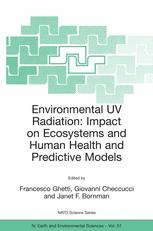

Most ebook files are in PDF format, so you can easily read them using various software such as Foxit Reader or directly on the Google Chrome browser.
Some ebook files are released by publishers in other formats such as .awz, .mobi, .epub, .fb2, etc. You may need to install specific software to read these formats on mobile/PC, such as Calibre.
Please read the tutorial at this link: https://ebookbell.com/faq
We offer FREE conversion to the popular formats you request; however, this may take some time. Therefore, right after payment, please email us, and we will try to provide the service as quickly as possible.
For some exceptional file formats or broken links (if any), please refrain from opening any disputes. Instead, email us first, and we will try to assist within a maximum of 6 hours.
EbookBell Team

4.3
78 reviewsThis volume originates from the NATO Advanced Study Institute Environmental UV Radiation: Impact on Ecosystems and Human Health and Predictive Models, held in Pisa, Italy in June 2001. The Institute was sponsored and mainly funded by the NATO Scientific Affairs Division, whose constant contribution in favour of the cooperation among scientists from different countries must be acknowledged. Other Institutions substantially contributed to the success of the ASI and our thanks and appreciation go to the Italian National Research Council (Consiglio Nazionale delle Ricerche), the Italian Space Agency (Agenzia Spaziale Italiana), the European Society for Photobiology and the bank Banca Toscana. In the last two decades of the past century, concern has been growing for the possible effects on the biosphere of the stratospheric ozone depletion, due to anthropogenic emissions of ozone-destroying chemicals. The ozone loss causes an increase in the biologically important part of the solar ultraviolet radiation (UV) reaching the Earth’s surface, which constitutes a threat to the biosphere, because of UV damaging effects on humans, animals and plants. The international agreements have reduced the production of ozo- destroying compounds, which, however, are still present in high concentrations in the stratosphere, mainly because of their longevity, and thus ozone depletion will likely continue for several decades.